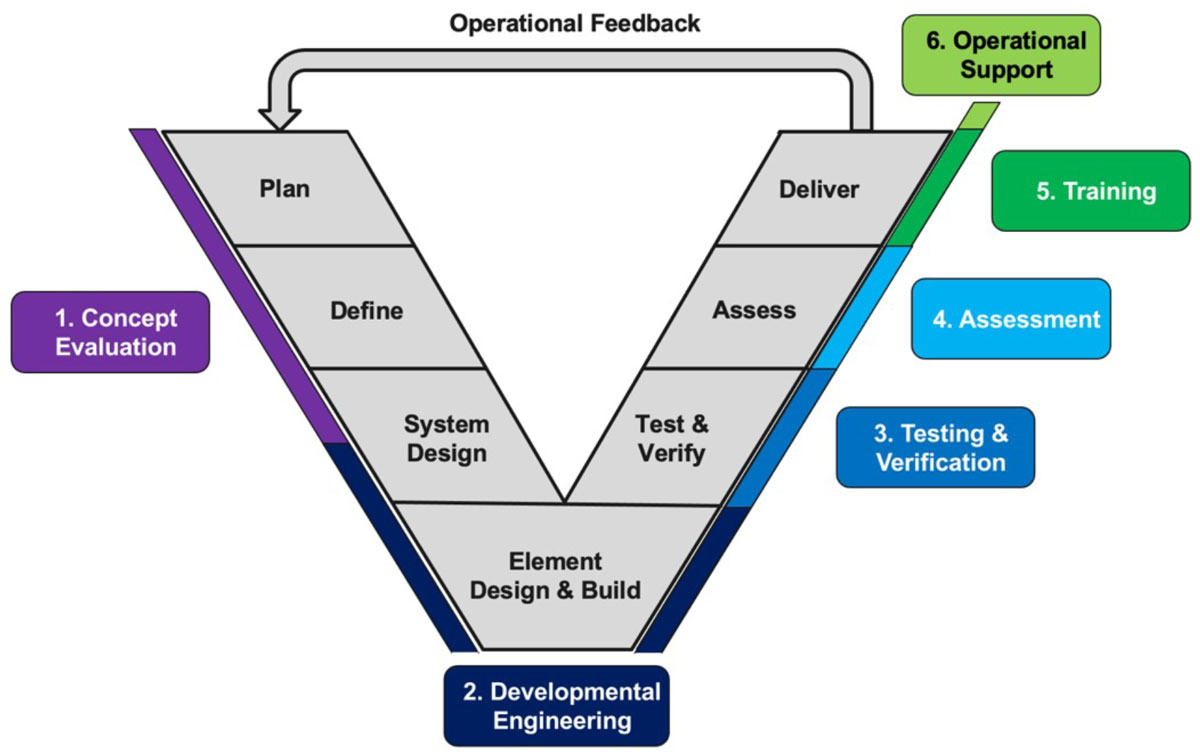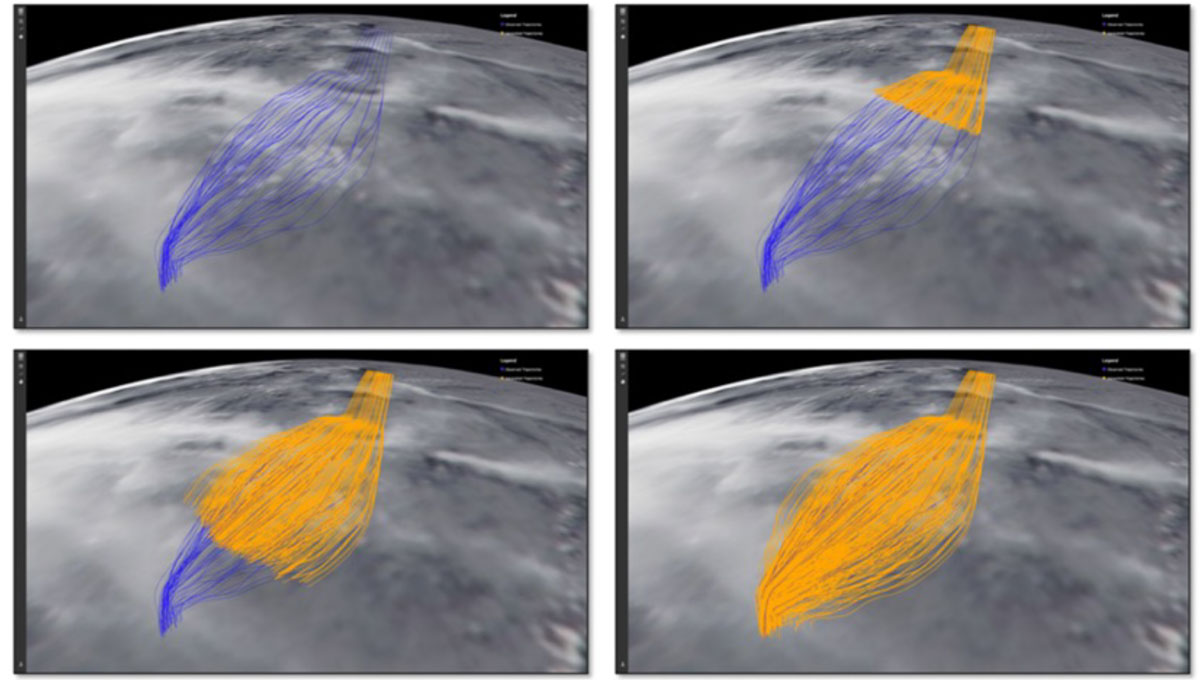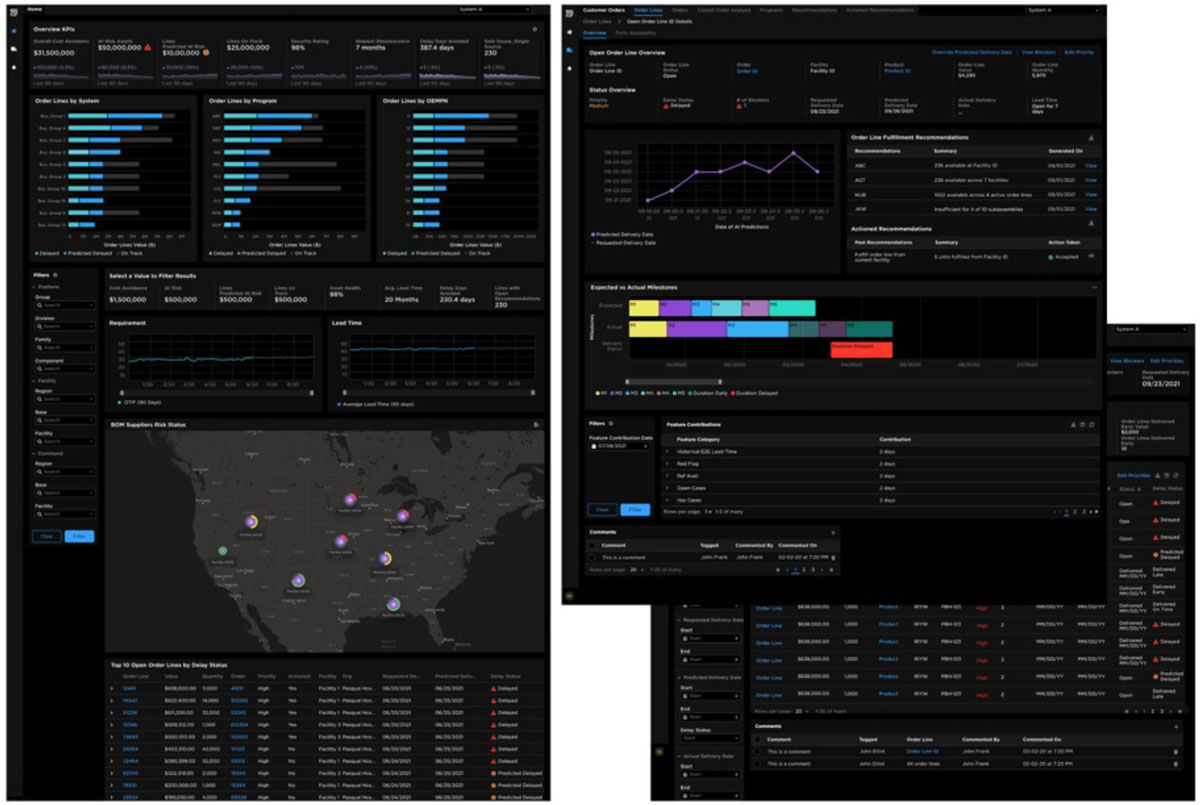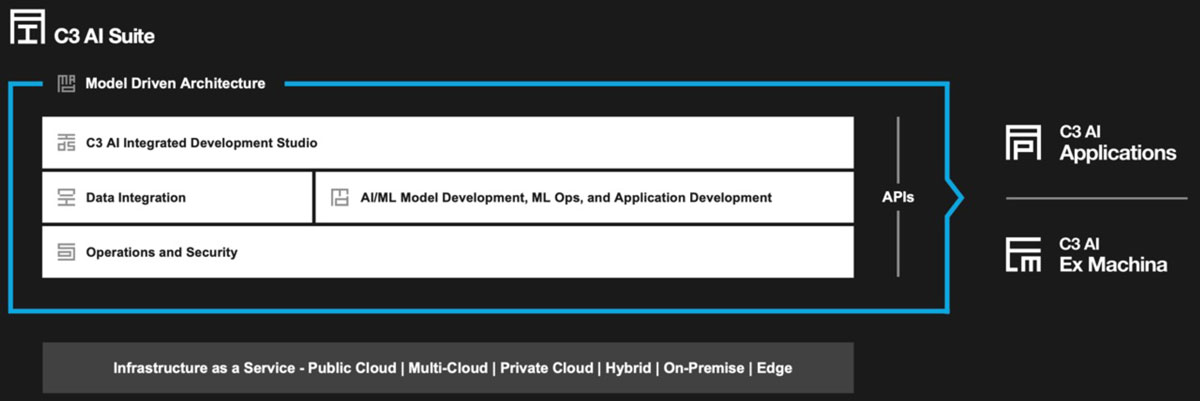A rewarding aspect of working at C3 AI is the opportunity to support the U.S. Department of Defense (DoD) with applied AI solutions to solve real operational needs. As former naval officers with test and evaluation backgrounds, we, like others at C3 AI, respect the challenges DoD organizations face to transition digital transformation initiatives into operational capabilities.
One critical capability under the DoD’s digital transformation initiative is modeling and simulation (M&S)—and with it, the need to integrate multiple technologies into viable, integrated, and functional solutions. The models, whether they are AI-based, physics-based, mathematical, or logical representations, need to leverage all relevant internal and external enterprise data, structured and unstructured, and at multiple security levels. The insights these models generate need to be delivered intuitively and in a manner that is interoperable with an organization’s current operations.
Applying AI-Enhanced M&S Across the DoD
In December 2021, the Missile Defense Agency (MDA) established a $500 million ceiling Production Other-Transaction (P-OT) Agreement with C3 AI with the goal of applying AI-enhanced modeling and simulation across the DoD.
This ordering guide, which significantly expands C3 AI’s existing P-OT Agreement with MDA, allows any DoD agency to acquire C3 AI M&S products and services on an accelerated timeline. The agreement’s Department-wide scope validates the importance of applying AI to modeling and simulation initiatives across all phases of research development test & evaluation (RDT&E), operations, and sustainment.
Intended Use Categories for AI-Enhanced M&S
Within the DoD, M&S provides the foundation for organizational and technical decision making and plays an integral role in the systems engineering process. The MDA has made significant progress on developing a M&S enterprise with an effective framework for grouping use cases. Each application category focuses on one problem, which automatically binds the functionality’s scope, defines associated data, and guides the overall development. Each category can be mapped to an organizational plan, such as the systems engineering plan (see below).

Figure 1. M&S intended use categories mapped to an MDA systems engineering plan.
Intended use case categories (as defined by the MDA):
- Concept evaluation focuses on the planning and definition of future capabilities. These models and simulations provide engineers, analysts, and operators the ability to understand emerging needs, analyze alternative solutions and technologies, develop future system requirements, and predict performance for future capabilities.
- Developmental engineering efforts support tests of an element’s interaction and interoperability with other elements of the broader system. These models and simulations support rapid and dynamic prototyping and testing of interfaces when the operational version of software does not contain the necessary data to evaluate and develop new capabilities.
- Testing and verification supports the evaluation of functional requirements to determine if requirements are met. Verification data is obtained through various tests (e.g., ground, flight, digital), and the developmental testing (DT) and operational testing (OT) require accredited models and simulations to support assessment.
- Assessment efforts provide support for the evaluation of component, element, and system capabilities. The high complexity and large scale of operations mean that assessments of effectiveness and functionality must leverage and integrate the results of independently accredited models and simulations to supplement various types of testing.
- Training focused models and simulations provide support for training and associated exercises. These exercises can be military maneuvers or simulated operations involving planning, preparation, and execution.
- Operational support provides analysis support for the currently fielded components, elements, and systems. Given that the operational environment is complex and not static, DoD personnel require M&S to conduct long-term, near-term, and current operations planning activities to accomplish their mission.
Requirements for an Enterprise-Scale M&S Suite
- Enable software application development in a modular and flexible manner to meet a constantly evolving set of M&S requirements and to support various downstream missions and use cases.
- Use an open systems architecture capable of executing on a variety of hardware systems and supporting multiple underlying technologies.
- Provide a single, modular, scalable, reconfigurable, secure, and composable architecture designed to provide the necessary application and services to implement an at-scale, future-proof M&S environment. This includes the services and mechanisms to facilitate the interaction and interoperability of models in a centralized or distributed environment.
- Enable the rapid development and integration of custom tools that process, store, curate, and perform automated analysis of simulation data. This automation includes the handling and processing of scenario input files (e.g., kinematics, EO/IR signatures), as well as the processing of data logs.
DoD Applications
C3 AI has developed a suite of applications for the DoD with specific use categories in mind. These applications have a combination of models, including AI-based, physics-based, mathematical, or logical representations. The outputs of the models directly make predictions surfaced in applications and/or serve as inputs to simulations and optimizations.
Threat Modeling and Simulation
Intended use categories: concept evaluation through assessment

Figure 2. Rapidly Generate Large Datasets in a Data-Starved Environment:
AI-generated threat hypersonic missile trajectories (orange) filling in the physics-based model envelope (blue).
Objectives:
- Model hypersonic missile performance from sparse all-source intelligence data leveraging deep generative models to characterize and simulate previously undefined threat scenarios
- Generate the full data package including trajectories and signatures across multiple spectrums
At MDA, the C3 AI Generative Modeling Application shortens the time from intelligence collection to model deployment by up to 100x. This work is at the cutting edge of physics-informed machine learning and has broad applications across the DoD including:
- Development of concept of operations (CONOPS)
- Assessment of operator workload and engagement timelines
- Reduction of system-level decision and design space
- Support for rapid prototyping and testing of newly developed capabilities

Figure 3. Generative Models Can Shorten Time from Intelligence Collection to Model Deployment by 100x.
Composing machine learning pipelines on the C3 AI Platform is a key enabler to scalability and rapid parallel development across data science teams. Pipelines combined with a tailored experiment framework automate model training processes, persist component outputs, and ensure reproducibility.
Supply Network Risk
Intended use category: operational support

Figure 4. C3 AI Supply Chain Suite and C3 AI Supply Network Risk Application provide AI-based predictions catered to the unique nature of different product lifecycles and operational environments.
Objectives:
- Model full supply chain
- Apply AI to generate risk scores by components
- Leverage optimization and simulation to characterize the full enterprise impact of intelligent scenarios
The application provides a lighthouse for prescriptive insights into current and future supply network risk leveraging all internal and external data for a full risk monitoring profile. Examples risk categories include:
- Product or material obsolescence
- Product security
- Foreign dependency
- Sole source, single source
- Fragile supplier, fragile market, capacity constrained supply market
- Gap in human capital, erosion of infrastructure
The results are increased efficiencies and improved system readiness for all product lifecycles and operational environments:
- Proactive and automatic risk identification
- Seamlessly calculate cost avoidance to properly plan and budget for obsolescence
- Identify and track resolutions
- Increase lifecycle affordability
- Reduce counterfeit park risk and remove problematic parts pre-production
- Optimize inventory and operational availability of parts
Readiness for Weapon, Sensor, and Vehicle Systems
Intended use categories: operational support and training

Figure 5. C3 AI Readiness enables various features customizable to operational environments including an executive view of fleet-level trends, prioritized lists of asset risk, component useful life thresholds, real-time asset health tracker, and optimized maintenance scheduling with recommended maintenance actions to minimize downtime.
Objectives:
- Model system performance using all relevant data (e.g., sensors, operations, maintenance, logistics, supply data)
- Predict system degrades to accurately forecast system readiness, optimize replacement part inventory
- Reduce unscheduled downtime
The U.S. Air Force Rapid Sustainment Office (RSO) uses the C3 AI Readiness application to increase aircraft availability and drive digital transformation across the enterprise through advanced artificial intelligence and machine learning capabilities. The application gives users across all echelons of Air Force sustainment the ability to:
- Reduce future unscheduled failures and flight-line disruptions
- Improve effectiveness of maintenance scheduling
- Enable proactive insights on aircraft health
- Enable end-to-end supply chain visibility
- Enhance command and control by aggregating fleet health
- Reduce cost per flying hour through condition-based maintenance
As of December 2021, the RSO Condition Based Maintenance (CBM+) program has fielded solutions for 7 aircraft platforms and are onboarding over 13 more and is actively monitoring more than 2,000 aircraft—and has the potential to save more than $5.5 billion when fully deployed across the DoD.
Expected results:
- Reduce unscheduled maintenance downtime
- Increase the mission-capable rates to 80%
- Reduce sustainment and flying hour costs
- Increase accuracy in long-range supply forecasting
As a result of this work, the RSO was awarded the 2021 Constellation SuperNova Award in Data for Decisions. This award is the apogee of public recognition for advanced AI accomplishments.
Enterprise AI Platform – The C3 AI Platform

Figure 6. The C3 AI Platform is open and highly extensible, with all components and artifacts API accessible. It runs on infrastructure as a service regardless of whether that is the cloud, on-premise, or the edge.
All applications built on the C3 AI Platform leverage a unique model driven architecture that significantly accelerates the delivery and reduces the complexities of designing, developing, and operating enterprise AI applications at scale. Application development has been proven to require 98% less code and has 26x faster production deployment timelines compared to alternative technologies. As a result, organizations can:
- Rapidly scale applications across the enterprise
- Take on additional use cases
- Deploy on any relevant infrastructure
- Operate at multiple security levels
- Ensure systematic enterprise-wide governance.
These enterprise AI capabilities are critical as MDA, other DoD organizations, and intelligence agencies accelerate their transformation towards large scale deployments of increasingly vital artificial intelligence capabilities.



